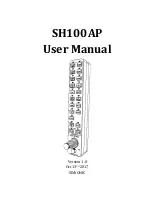
Page 18
The X-axis shows horizontal speed, the Y-axis shows sink rate. In a head wind or sink
conditions, the best glide speed increases. In order to find the optimum speed to fly
value in sink, you simply add the sink of the air to the polar of your glider, drawing a new
polar and a new tangent line from the initial point of axes. The new tangent (point D)
meets the polar at the point giving a higher optimum flying speed VD.
To obtain the correct “Speed to fly”
you have to adjust your speed so
both McCready arrows are in the
same position.
6.6
McCREADY
To utilize the McCready functions, you must have an air speed
probe connected. The optional air speed probe should be
plugged in to the right hand socket on the bottom of the vario.
If this parameter (ADVANCED SETUP \ n. 5 POLA) is set to “OFF”, all display
information relating to McCready, McCready Equivalent, Thermal Sniffer,
Netto Vario is not displayed on the instrument, creating a cleaner display for users not
needing this functionality.
The McCready value is the average lift value of last 10 minutes . The average time can
be adjusted , go to (ADVANCED SETUP \ n. 15 MCRA).
6.7
EQUIVALENT McCREADY
To utilize the McCready functions, you must have an air
speed probe connected. The optional air speed probe should
be plugged in to the right hand socket on the bottom of the vario.
Equiv. McCready
McCready
Optimal Good Bad
- Speed to fly indications -
McCready
Equivalent
McCready



































